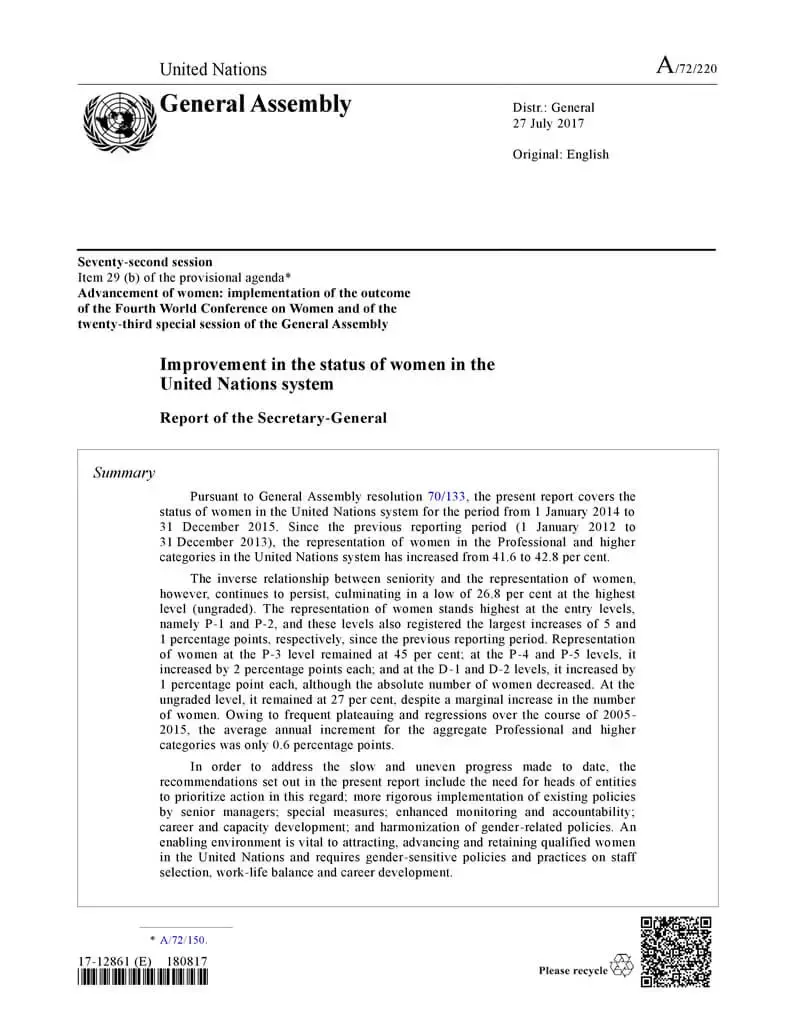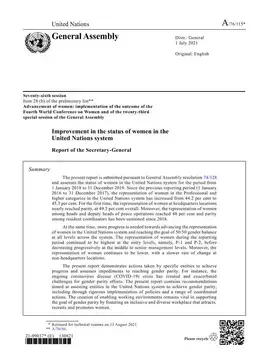
Improvement in the status of women in the United Nations system: Report of the Secretary-General (2017)
Pursuant to General Assembly resolution 70/133, the present report (A/72/220) covers the status of women in the United Nations system for the period from 1 January 2014 to 31 December 2015. Since the previous reporting period (1 January 2012 to 31 December 2013), the representation of women in the Professional and higher categories in the United Nations system has increased from 41.6 to 42.8 per cent.
The inverse relationship between seniority and the representation of women, however, continues to persist, culminating in a low of 26.8 per cent at the highest level (ungraded). The representation of women stands highest at the entry levels, namely P-1 and P-2, and these levels also registered the largest increases of 5 and 1 percentage points, respectively, since the previous reporting period. Representation of women at the P-3 level remained at 45 per cent; at the P-4 and P-5 levels, it increased by 2 percentage points each; and at the D-1 and D-2 levels, it increased by 1 percentage point each, although the absolute number of women decreased. At the ungraded level, it remained at 27 per cent, despite a marginal increase in the number of women. Owing to frequent plateauing and regressions over the course of 2005–2015, the average annual increment for the aggregate Professional and higher categories was only 0.6 percentage points.
In order to address the slow and uneven progress made to date, the recommendations set out in the present report include the need for heads of entities to prioritize action in this regard; more rigorous implementation of existing policies by senior managers; special measures; enhanced monitoring and accountability; career and capacity development; and harmonization of gender-related policies. An enabling environment is vital to attracting, advancing and retaining qualified women in the United Nations and requires gender-sensitive policies and practices on staff selection, work-life balance and career development.


